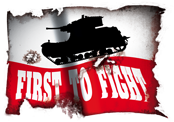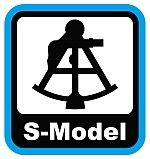These
two quickbuild Panzers, Panzer III Ausf. E number PL 1939-014 by
First to Fight, and Panzer III Ausf. G 5cm (DAK), number PS 720016
by S-Model are available for some time now.
I bought both because the tracks were the early version and both
companies succeeded to have the tracks meet in the middle to represent
guide horns, and avoided the ribs that are visible in other tracks
as in their Pz.Kpfw. I versions. Most available 1/72 models are
later types, Ausführung L onwards to M and N.
Both these models are value for money, fill a gap in the series
and show great surface detail. A first look at the FtF product shows
us the typical boxart, the simple single sprue for one tank, a toothpick,
glue jar and the magazine that goes with it. Both the boxart and
the magazine show you details to paint, how to assemble, and information
about the vehicle, specifically issued by FtF because the type PzKpfw
III E was present in the first fighting that took place when Germany
invaded Poland.
I obtained
the S Models Kit from our well-known website friend Henk Timmerman,
one of the second sets of his collection of S-Model kits; hence
I do not have a boxart to show. (Ed. Note: we took the boxart
from Henk's
site.) I’ve used a picture of the boxtop in the background
showing you one of each sprue that you get twice in every S Model
box. The S Model kits are more extensive as you get PE detail, transfers
and a separate sprue with spare wheels and some other details, not
included on the main sprue. Both companies represent the early version
of the suspension (drive sprocket and idler) and their engineering
and quality is almost the same, and very well done. The outside
of the tracks are wanting, and the holes need to be drilled out,
but as the horns are represented and the wheels are very well detailed,
this can be overcome in a diorama setting. Those of you who want
it perfect can take off the tracks, divide the idler and drive wheels
and reconstruct them with borrowed tracks from other kits. I had
a look at my spares box and believe even road wheels from other
kits could be used. The supplied road wheels are 7 mm diameter both
for FtF and S Model. I measured some others in 1/72 like Esci (those
are 7.5 mm and the largest around), Revell (7.3 mm), 1/76 kits as
Nitto (7.0 mm) and Matchbox and Airfix (6.8 and 6.9 mms respectively).
It should not hurt the eye in my opinion, so you can create your
own details using the very well depicted old drive sprockets and
idlers of both kits for early type Pz.Kpfw. III’s, if you
want. The most fortunate or laziest can use the old idler type as
supplied in the Trumpeter Sturmgeschütz III Ausf.B that has
also the newer idlers, which were also used for the type, included
in the box.
I made a line up of main parts delivered in these two kits I am
previewing here, to show you where they are different. I have written
the manufacturers of shown parts in the second picture. The dark
gray sprues and parts are always FtF, the crème Parts are
S Model; Revell is darker yellow and Trumpeter is light grey, Attack
almost white.
The turrets:
the early pattern turret top detail of the FtF version is clear, with
the observation dome, and the older type cupola. Against that, the
later turret top in the S Model kit is showing a later ventilator
configuration as started in the F version and of course, the newer
cupola and the turret bin.
The engine deck details are, in my humble opinion, very well rendered
in the FtF version, nicely depicting the flat deck and the panels
in early configuration, with a sloping rear over the radiator covers.
In turn, the S Model deck has molded on ventilation covers over three
motor covers and elevated ventilation flaps as supplied over the radiator
covers in the tropical Pz.Kpfw. III version it depicts.

